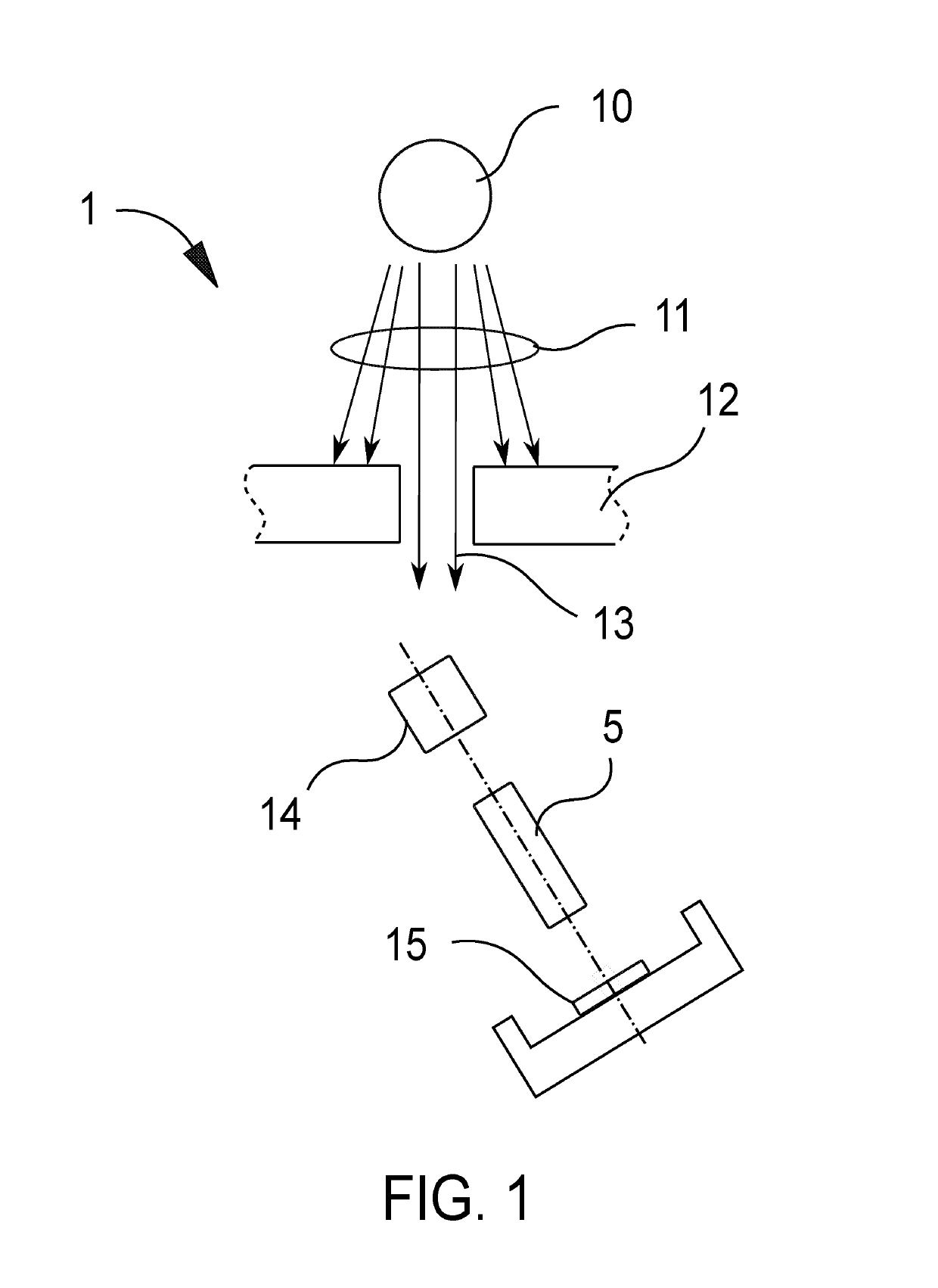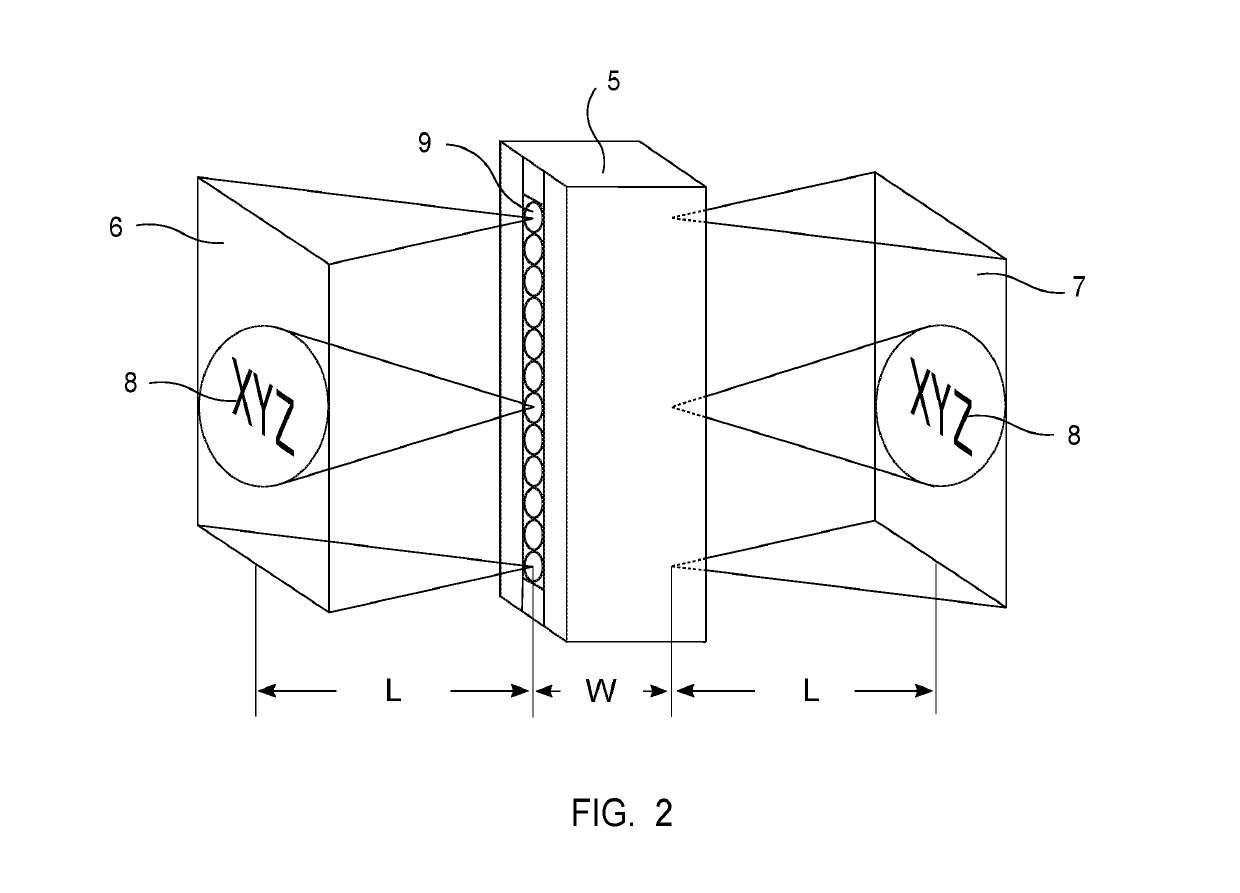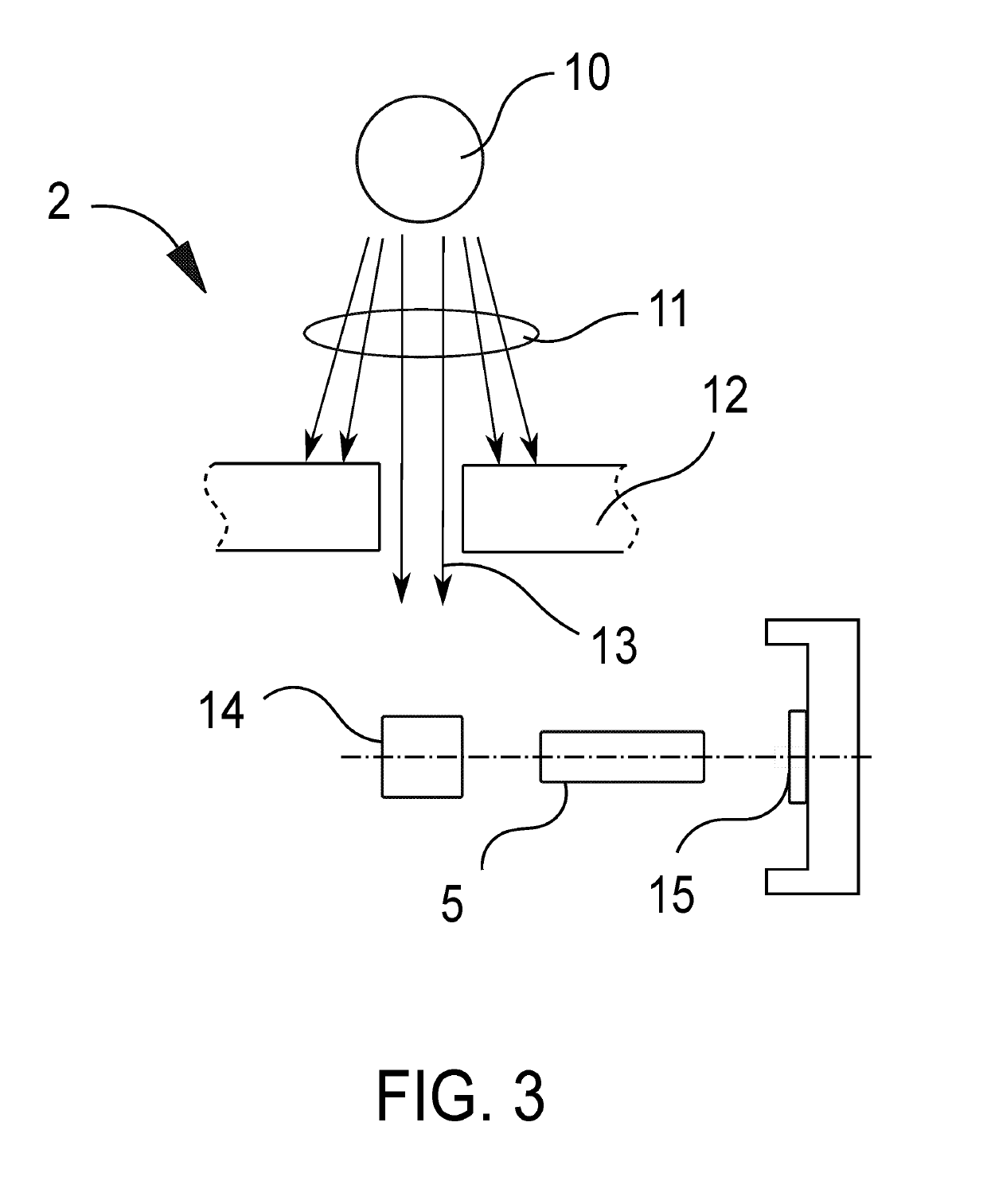Rod lens array coupled linear radiation detector with radiation coming from a side direction of scintillating material
a radiation detector and linear radiation technology, applied in the direction of x/gamma/cosmic radiation measurement, radioation controlled devices, instruments, etc., can solve the problems of high cost of fop, inconvenient use, and high x-ray path, so as to achieve constant focal length and low cost. , the effect of high volum
- Summary
- Abstract
- Description
- Claims
- Application Information
AI Technical Summary
Benefits of technology
Problems solved by technology
Method used
Image
Examples
Embodiment Construction
[0047]The present invention is a linear X-ray detector system 1.
[0048]The detector system 1 is based on a unique focusing principle that utilizes a rod lens array 5.
[0049]A typical rod lens array 5 is illustrated in FIG. 2. Selections of rod lens include commercially available single row and dual row rod lens.
[0050]The X-ray detector system 1 comprises scintillating material 14, a rod lens array 5 and image sensor array 15. In light pass, there is no other unnecessary optical media like optical glue, glass, plastics, plate, prism, mirror etc in order to preserve light transmission with high efficiency.
[0051]Some of the viable options for the scintillating material are Gd2O2S:Tb (GOS or GADOX), CsI(TI), CdWO4, or GAGG:Ce etc.
[0052]Scintillating material 14 is placed in an object image plane 6 and is used to convert the impinging X-ray energies into visible light which can be detected by the image sensor array 15 in image plane 7.
[0053]There is also shielding material 12 and slit aper...
PUM
 Login to View More
Login to View More Abstract
Description
Claims
Application Information
 Login to View More
Login to View More - R&D
- Intellectual Property
- Life Sciences
- Materials
- Tech Scout
- Unparalleled Data Quality
- Higher Quality Content
- 60% Fewer Hallucinations
Browse by: Latest US Patents, China's latest patents, Technical Efficacy Thesaurus, Application Domain, Technology Topic, Popular Technical Reports.
© 2025 PatSnap. All rights reserved.Legal|Privacy policy|Modern Slavery Act Transparency Statement|Sitemap|About US| Contact US: help@patsnap.com



